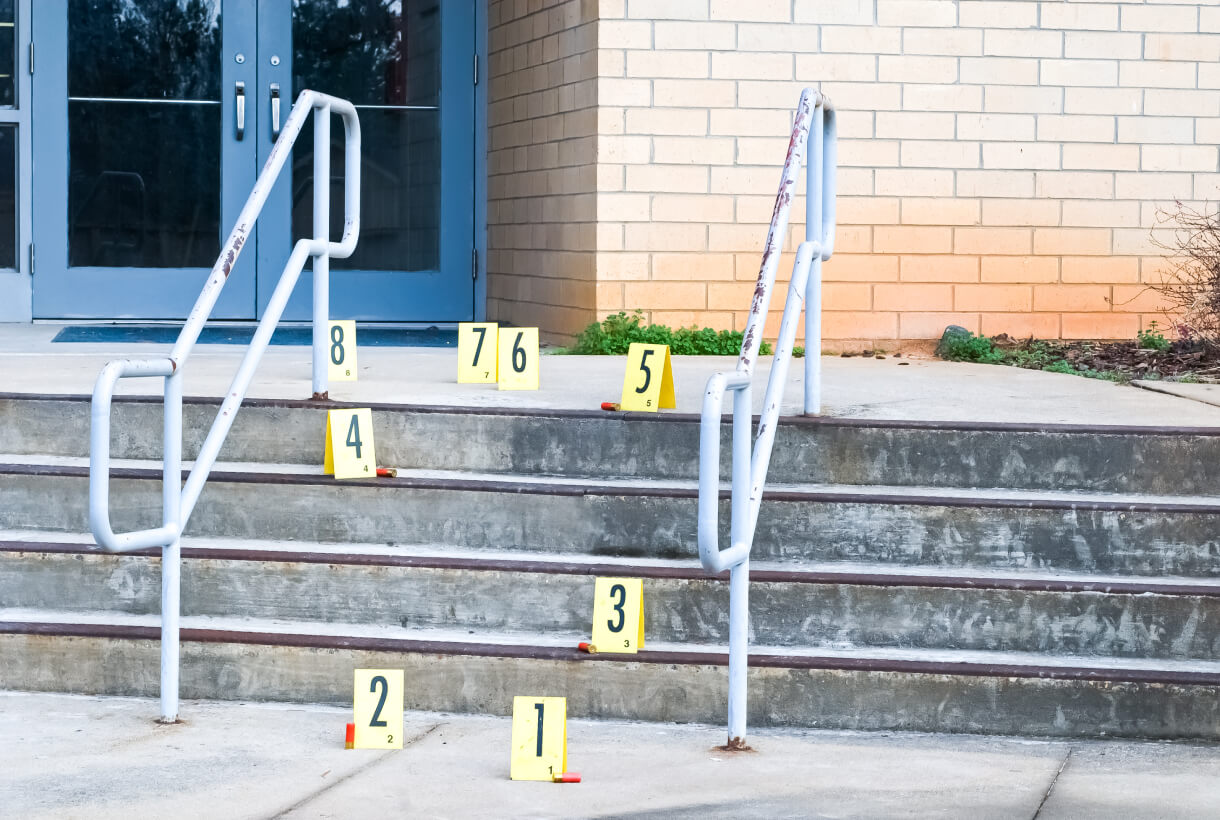Active shooter incidents can occur just about anywhere, at any time. As we enter the month of September—National Campus Safety Awareness Month—it’s important to remember that colleges and universities are no exception. The “Active Shooter Incidents 20-Year Review, 2000-2019,” published by the FBI, reports 18 active shooter incidents at institutes of higher education within the last two decades, with 82 wounded and 75 fatalities.
These numbers are troubling, yet are a part of our new reality. The debate continues as to the root cause of shootings and the best way to prevent them. But it’s undeniable that every college and university must be prepared to face an active shooter event.
Be Proactive and Develop a Policy
Leaders of educational institutions and first responders alike must be prepared to make fast, informed decisions and communicate quickly and effectively with crisis response teams and impacted students, staff and faculty. Developing an active shooter policy long before it’s needed is essential. The policy should include clear language, information and directions that prepare personnel to act quickly during a crisis.
Next, using technology like critical event management can facilitate a fast and effective response to any crisis, including an active shooter scenario. This is where risk intelligence capabilities are instrumental. Risk intelligence uses artificial intelligence (AI) to scour through mountains of global data to find relevant information without human intervention. It can provide visibility into an emerging threat at or near any of your campuses in real time. It’s about protecting your people wherever they are. This includes campuses in other parts of the world or students or faculty who are traveling under a sponsored program, and it can go a long way in fulfilling your duty of care obligations.
Critical communications capabilities are also essential to help you deliver alerts quickly and securely to the right people. Because each person has their own preference for how they receive alerts, make sure you have support for multiple modalities. Also look for the ability to deliver messages simultaneously via many paths, including cell phones, email, text messages, social media, TDD/TTY services, landlines, RSS feeds and FEMA’s Integrated Public Alert and Warning System (IPAWS).
When choosing a critical event management platform, be sure it is fast, fully redundant and reliable, and able to deliver millions of messages simultaneously. You’ll also want the ability to allow senders to specify particular geographic areas of notification and permit two-way communication.
When the threat is changing moment-to-moment, an audit trail is important in order to rapidly confirm messages were sent and received. You’ll want to use notifications to gather information such as location and whether recipients are safe or need assistance, so the capacity to keep track of enormous amounts of data is imperative. In order for that data to be readily available to and accessed by your people on the ground, the ability to work seamlessly with all smart devices is also important.
Every minute counts during an active shooter incident, so you want to reduce time to resolution. With incident management capabilities, you can send crisis plans to response teams so they can act immediately and collaborate easily.
Informed is Empowered
With the right policies and systems in place, the last piece of the puzzle is training, both within your organization and jointly with emergency response agencies. Combined training and drills should include everything from assessing an active shooter scene to room entry and building-clearing procedures, first aid and triage, disarming shooters and explosive devices and victim rescue. More and more cities are conducting this training with their first responders and providing resources for local organizations and businesses. The following are available through federal and national agencies:
- The FBI’s Active Shooter Resources webpage provides training videos and best practice guidelines for developing active shooter policies.
- In an effort to standardize and formalize preparedness and response, the National Fire Protection Agency’s (NFPA) Standards Council has developed the NFPA 3000: Standard for Preparedness and Response to Active Shooter and/or Hostile Events. The committee is chaired by experts in emergency management from government, paramilitary, non-governmental and research organizations. The standard focuses on interoperability between various parts of the emergency management community, with a concentration on active shooters.
- The Cybersecurity & Infrastructure Security Agency also provides a range of information and resources for active shooter preparedness.
Critical event management can help you facilitate awareness, communication and response steps for every person in the potential sphere of impact. And educational leadership is in a unique position to empower teams to work together to ensure students, staff and faculty are informed and safe in the face of an active shooter crisis.

